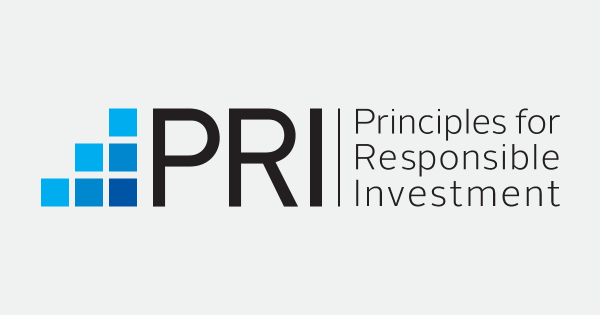ESG investing has matured dramatically in recent years. Toby Belsom, head of investor practices at the Principles for Responsible Investments (PRI), provides a summary of the academic literature from the foundations laid by Paul Gompers in 2003 to current developments today.
Paul Gompers may not be a household name, but back in 2003, he laid the foundations for much work that correlated ESG factors and rankings with corporate and shareholder returns. Groundbreaking research that laid the way for much of the research around ESG and returns which supports the incorporation of ESG into investment decisions.
Gompers’ work was one of the first pieces that pointed to a correlation between shareholder rights and profitability, sales growth and M&A. The message from Gompers et al is unequivocal – good governance is important.
This piece, and others, has spawned a flood of industry and academic research. One of the most widely quoted pieces is the 2015 Deutsche Asset & Wealth Management and University of Hamburg study reviewing over two thousand academic studies published since 1970 which recorded that a significant majority of reports identify a positive correlation between ESG factors and corporate financial performance.
MOVING FROM 2003 TO 2019
But we are in 2019 and lots has happened in the last decade – the Paris Agreement, the Global Financial Crisis, the growth in passive strategies, the snowballing interest in ESG from asset owners, asset managers and regulators3 and an increasing body of academic and industry research on ESG and returns. As a bit of a rain check, we collated and reviewed relevant ESG publications from the 15 largest global fund managers and leading academics in the area.
We did not cover everything – a starting point only and if you would like to suggest additional material we would be interested to add to this list. But that starting point did result in a number of interesting reflections.
CORRELATION NOT CAUSATION
Firstly, most academic and industry work focuses on identifying correlations between ESG factors or rankings and returns. Few try to establish or explain causation between better ESG performance and improved corporate financial performance, absolute or relative portfolio or benchmark returns.
There also seems to confusion between ESG factors and associated scores and ratings. These scores, ratings or assessments measure how well security issuers perform on ESG performance relative to their peers. Sometimes these are aggregated measures of ESG performance – sometimes they reflect only a single aspect. They can help investors make more informed decisions but do not capture the implications of factors or trends on corporate or issuer balance sheets, profit and loss accounts or cash flows.
RANKINGS – GEOGRAPHY, TIME AND ISSUES
Various pieces of research or commentary do identify correlations between ESG rankings and financial metrics such as quality, price to book, profitability, volatility, returns and market cap. These relationships often vary in strength depending on the time period and geography selected. One notable and repeating correlation seems to be between ESG rankings and emerging market equity returns. Many reports split ESG rankings – again showing different correlations with most (but not all) surveys identifying governance as the metric with the strongest and most consistent correlation with returns – across both fixed income and equity asset classes.
The strength of correlations also varied over time with some commentators highlighting that the correlation strengthened during periods of raised market volatility or market disruption. This was observed across various asset classes.
Why pension funds and millennials should avoid ESG
Another feature of some pieces of industry and academic research was the positive or negative change or rate of change in ESG ratings which provided an ‘interesting signal’ in terms of asset returns. Not just the absolute or relative value.
Alongside geography and time, correlations between corporate financial performance and ESG rankings also varied between industrial sectors, with a closer correlation in sectors with a greater reliance on heavily regulated activities or those which required a ‘social’ licence to operate. For example, sectors such as resources, consumer and utilities had a seemingly stronger statistical relationship between ESG and corporate financial performance.
…BUT WHY?
From the sample of research we reviewed, few pieces to really dug into causation – what explains an identified relationship. MSCI was one of the few organisations that tried to explain correlations by hypothesising on three transmission mechanisms between ESG factors and improved business performance, valuation and risk profile – cash flow channel, idiosyncratic risk channel and valuation channel.
WHAT ABOUT AT A PORTFOLIO LEVEL?
Though research has identified correlations between ESG factors or rankings and shareholder returns or corporate financial performance, at a portfolio or benchmark level, there seemed to be little conclusive evidence of consistent out-performance compared to ‘standard benchmarks’ or portfolios. Perhaps this is unsurprising as most ESG benchmarks and funds’ primary approach is based around the exclusion of certain sectors or activities.
ETF Insight: Can ESG investors do good and avoid underperforming?
The relationship between engagement and shareholder returns was covered in just a small number of studies. These reports outlined some of the benefits to corporations and investors of successful engagement including broader institutional ownership. Successful engagement on governance and climate change had the strongest correlation with subsequent returns. The picture is complicated, fluid and will no doubt continue to develop. It is certainly set to be an important topic for further research.
Toby Belsom is head of investor practices at the PRI
This article first appeared in the Q4 2019 edition of our new publication, Beyond Beta. To receive a full copy, click here.
Further Reading
Paul A. Gompers, Joy L. Ishii, Andrew Metrick February 2003 ‘Corporate Governance and Equity Prices’ [Quarterly Journal of Economics]
Deutsche Asset and Wealth Management, December 2015 ‘ESG and Corporate Financial Performance: Mapping the global landscape’
2019 PRI Annual report
Blackrock Feb 2019 ‘Sustainability the future of investing’; Northern Trust Asset Management ‘Is ESG a factor?’ https://www.northerntrust.com/documents/pov-reprint/is-esg-a-factor; Barclays 2016 ‘Sustainable investing and bond returns’. Brekingbridge capital Advisers 2016 ‘ESG Integration In Corporate Fixed Income’
Dorfleitner, G., Utz, S., & Wimmer, M. October 2013. ‘Where and when does it pay to be good? A global long-term analysis of ESG investing’. [In 26th Australasian Finance and Banking Conference.}
Pinebridge Investment 9 May 2019 ‘Don’t Fall for These Myths About ESG in Emerging Markets’. Cambridge Associates 2016 ‘The Value of ESG Data: Early Evidence for Emerging Markets Equities’
Amundi Nov 2018 ‘How ESG Investing Has Impacted the Asset Pricing in the Equity Market’
UBS 2018 ‘Sustainable Investing Education Primer: ESG Engagement Equities’; Lazard 2017 ’Giving Credit Where it’s Due: ESG Factors in EM Soveriegn Debt’
MSCI 2017 ‘Foundation Of ESG Investing: Part 1: How ESG Affects Equity Valuation, Risk, and Performance’
Eccles, R. G., Ioannou, I., & Serafeim, G. (2014). ‘The impact of corporate sustainability on organizational processes and performance’. [Management Science, 60(11)].
MSCI (2019). ‘How ESG Affects Equity Valuation, Risk, and Performance’
Friede, G., Busch, T., & Bassen, A. (2015). ‘ESG and financial performance: aggregated evidence from more than 2000 empirical studies.’ [Journal of Sustainable Finance & Investment, 5(4)].
Dimson, E., Karakaş, O., & Li, X. (2015). ‘Active ownership’ [The Review of Financial Studies]



